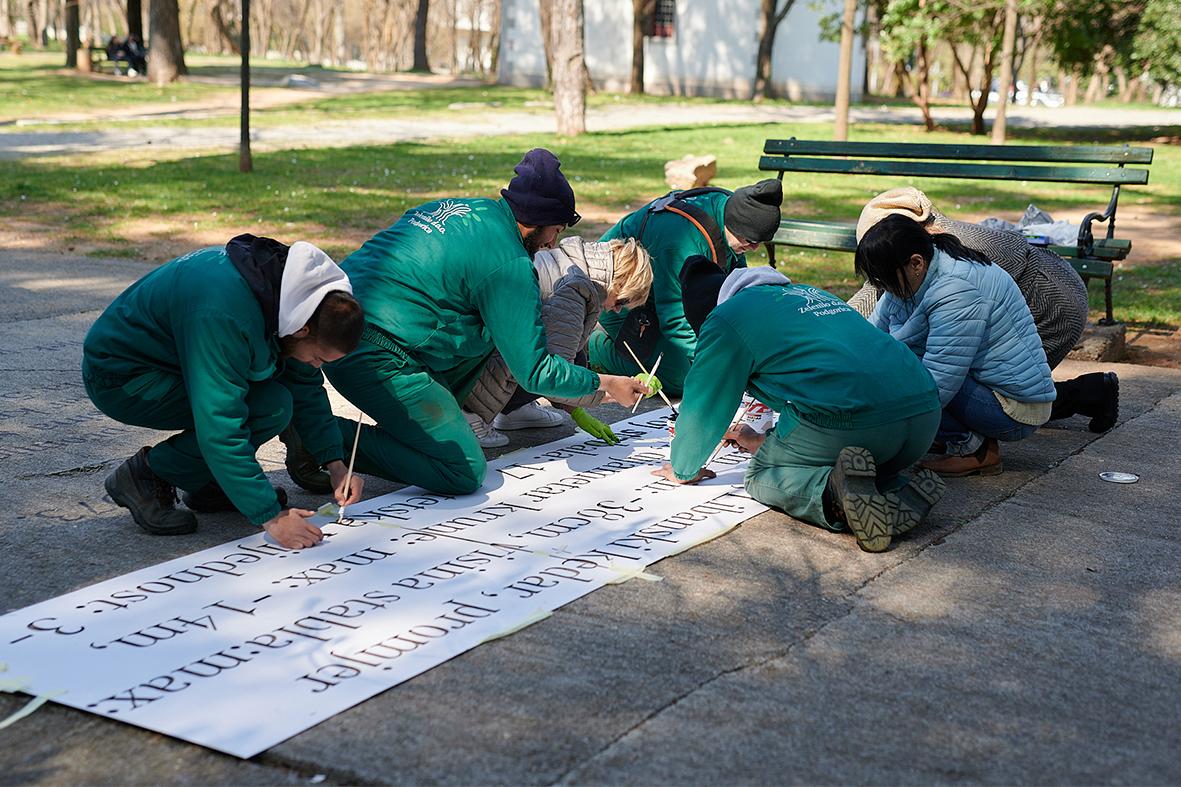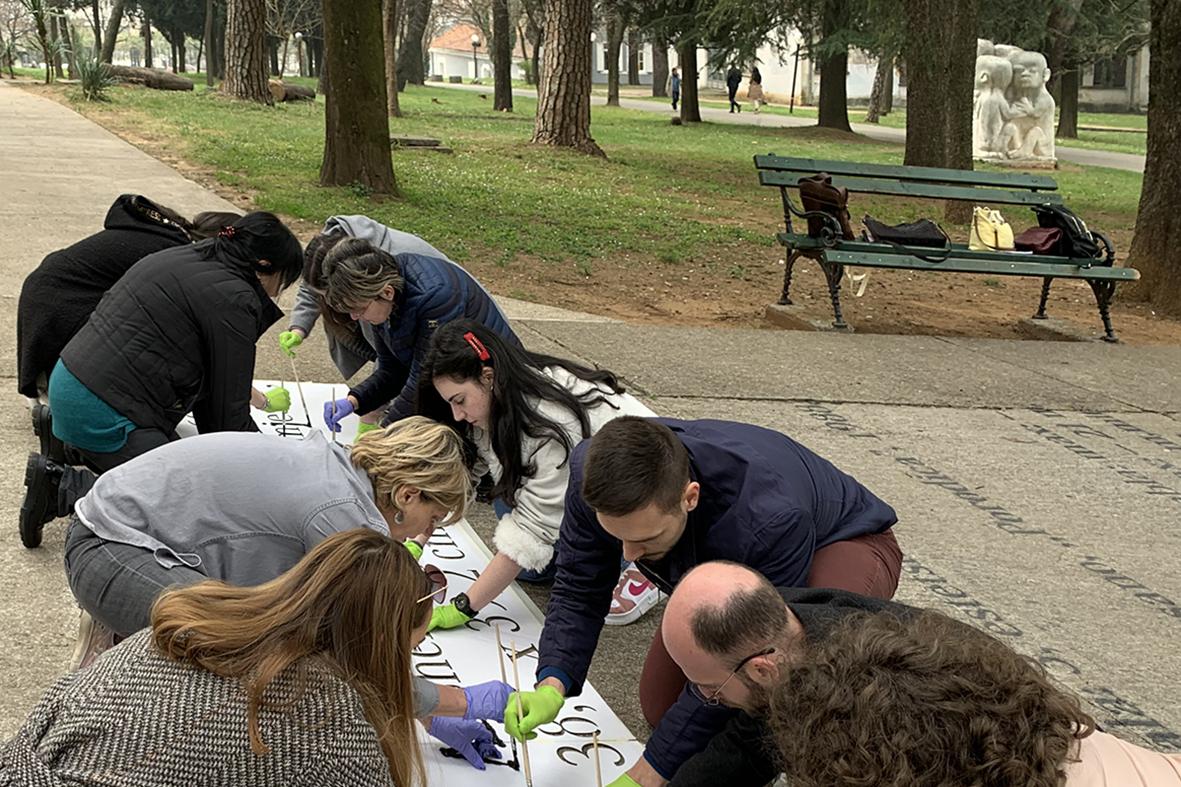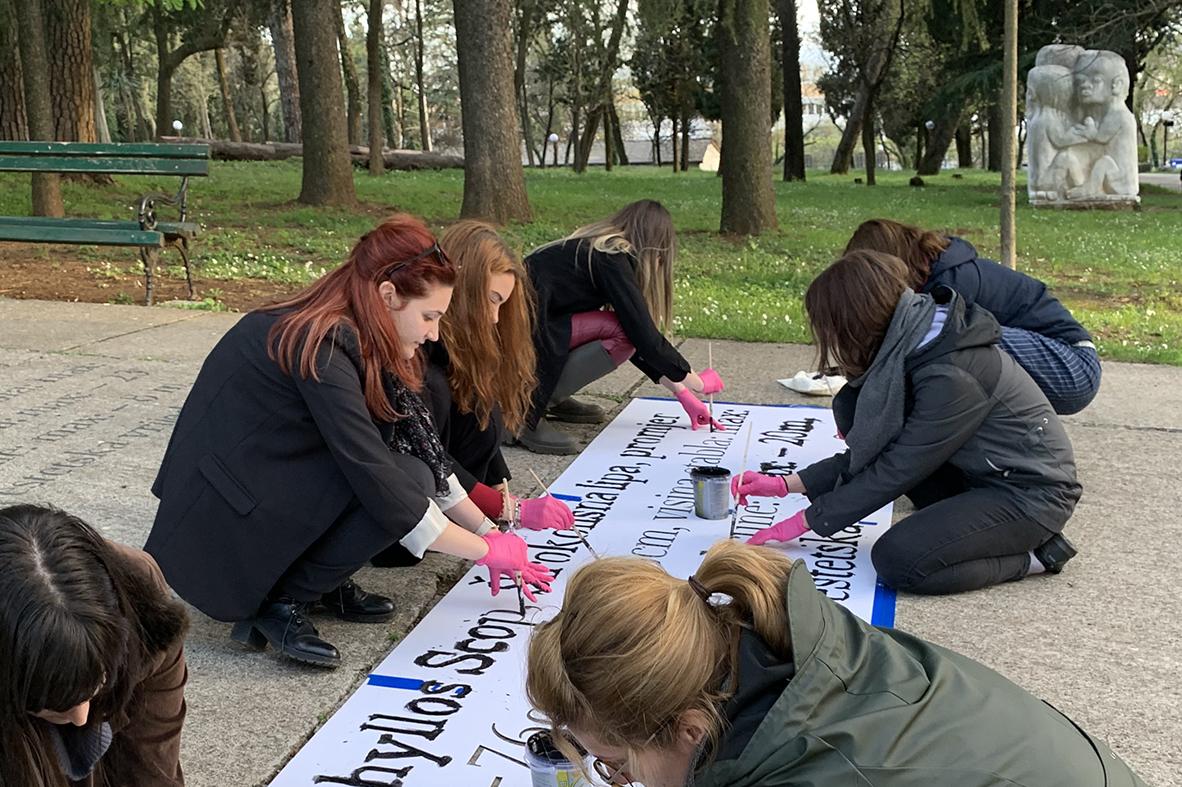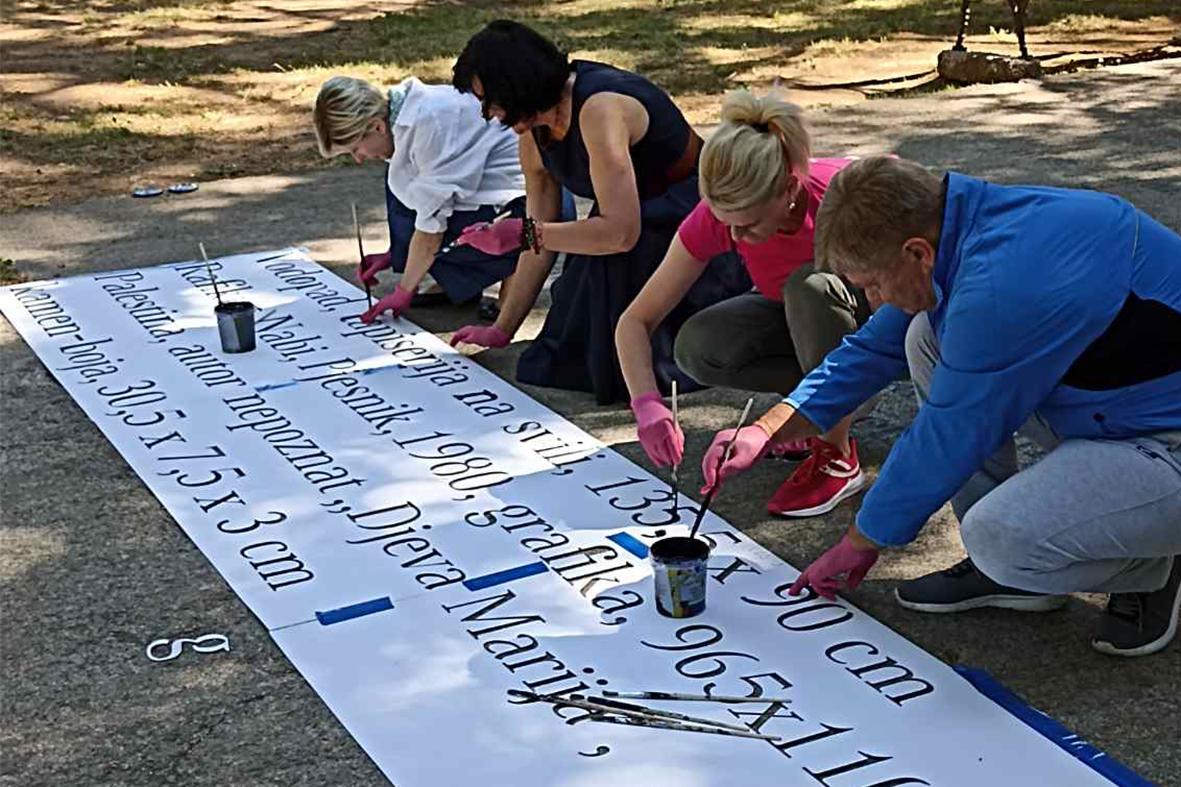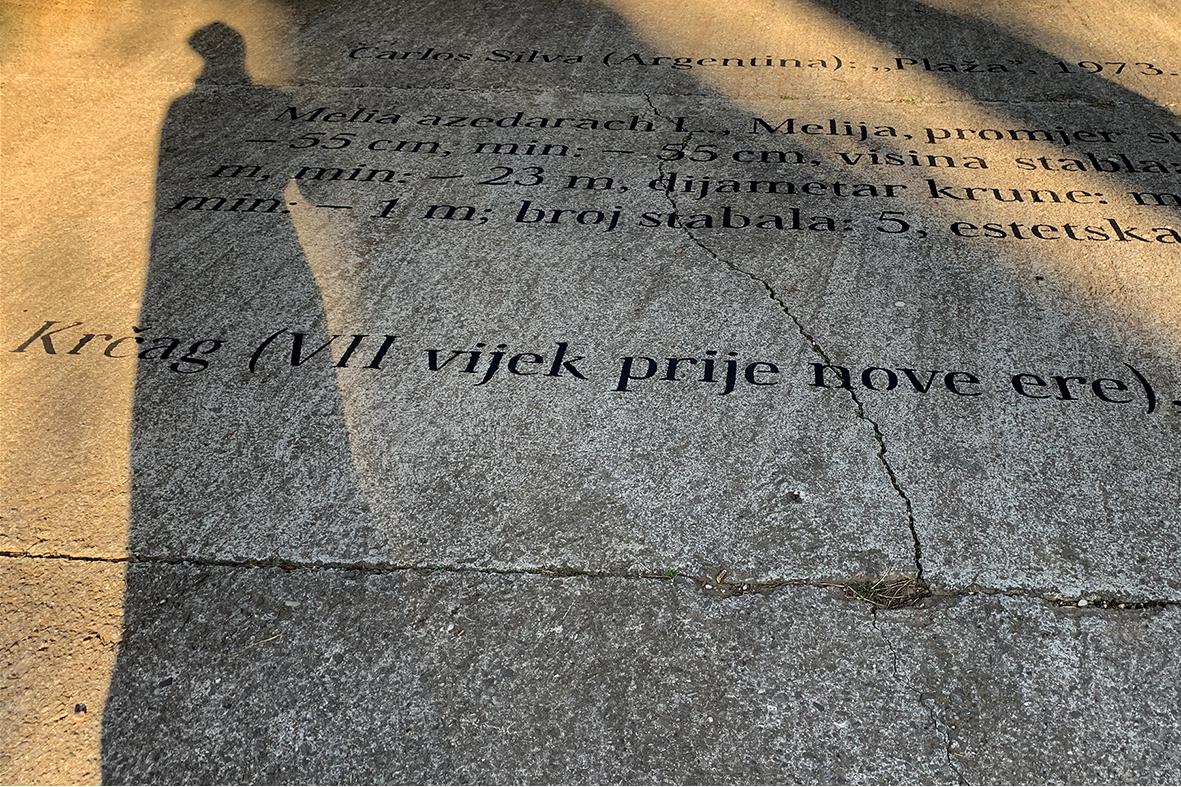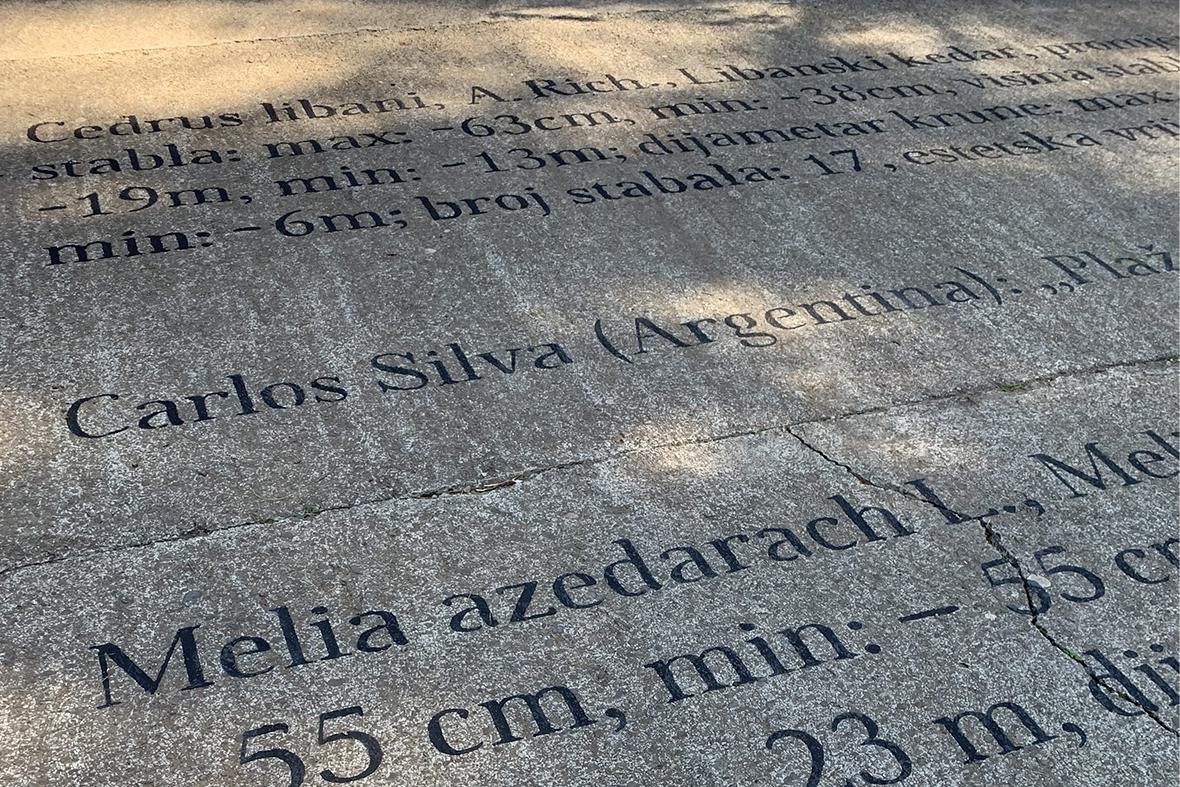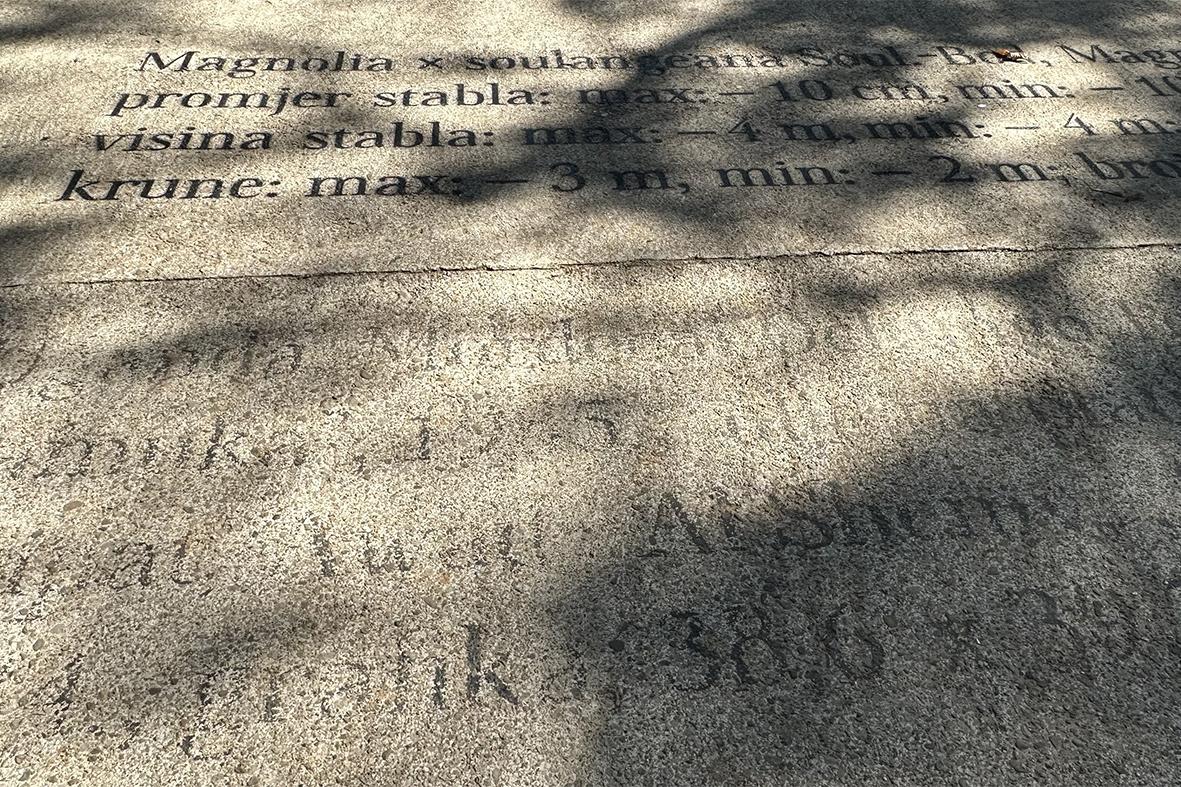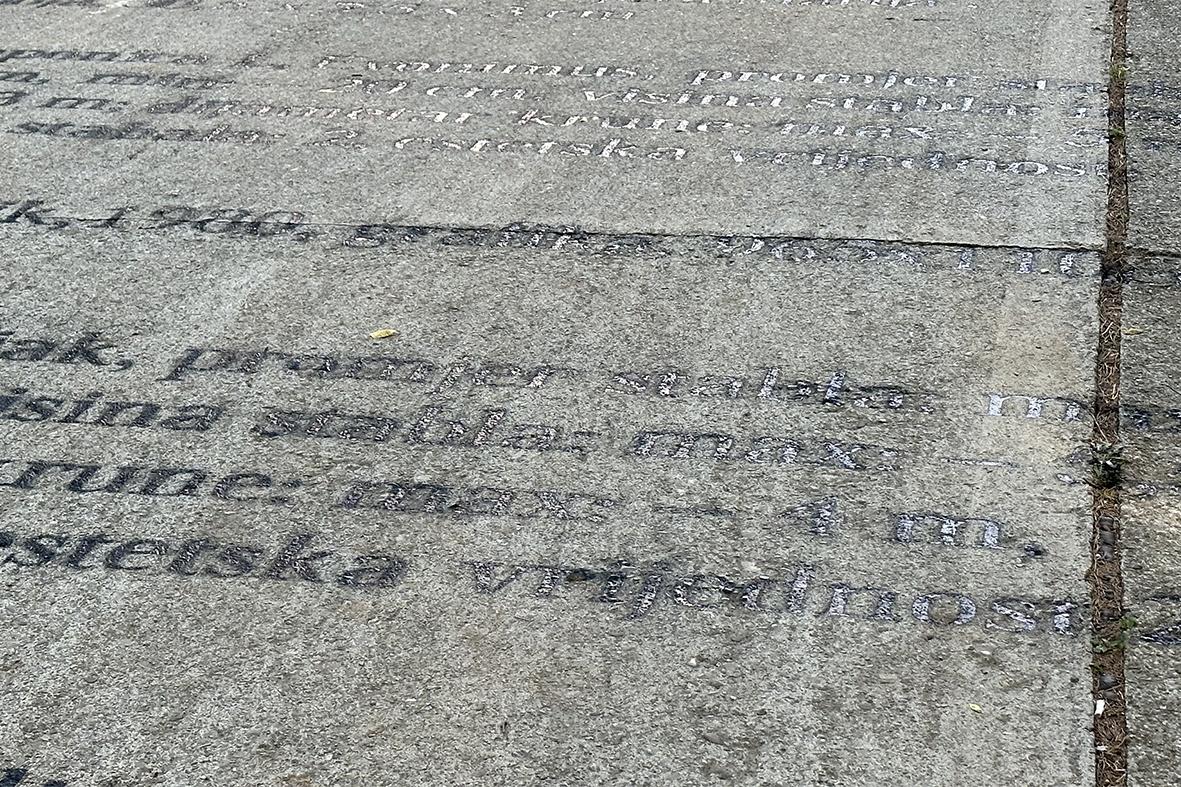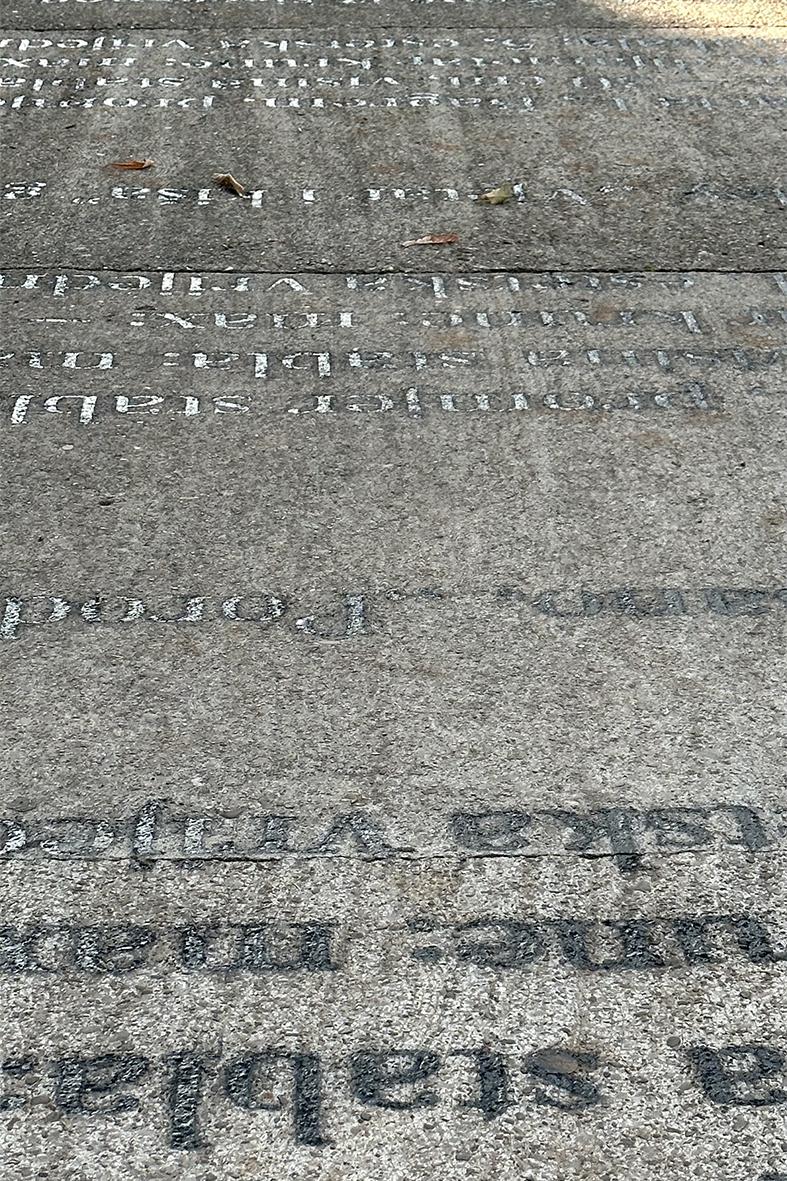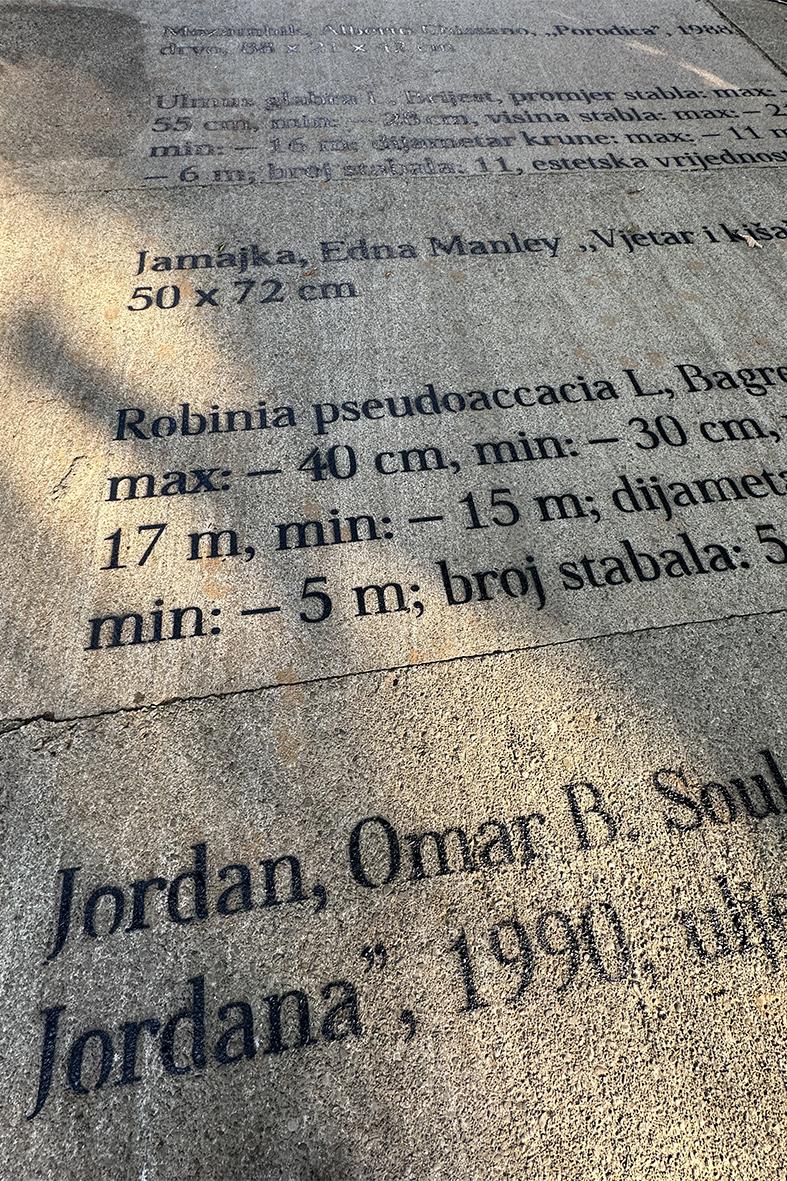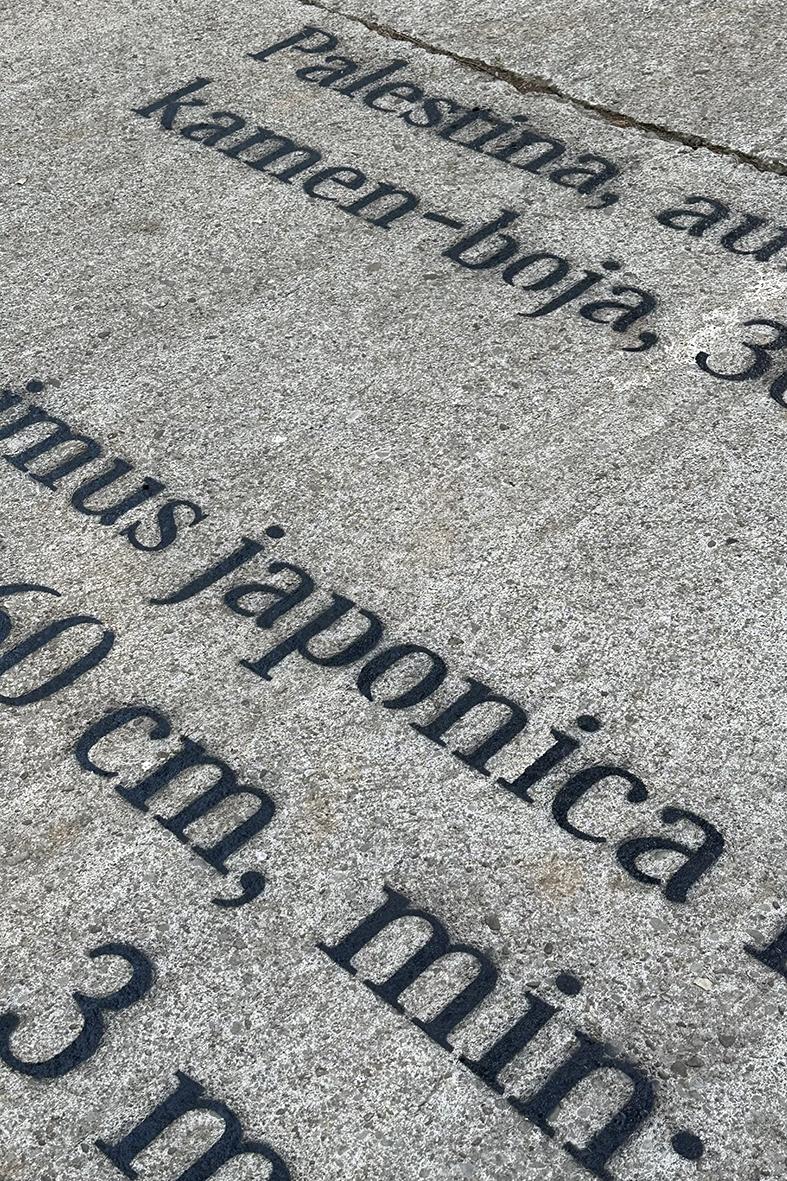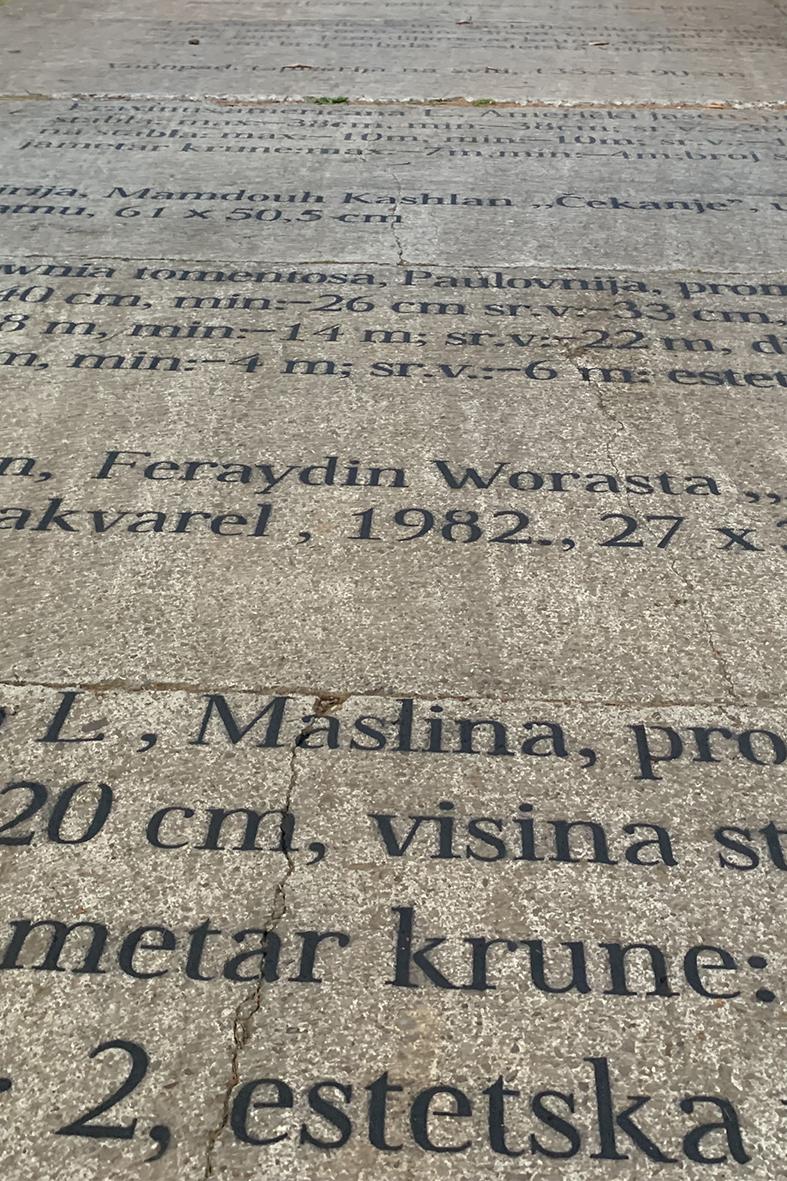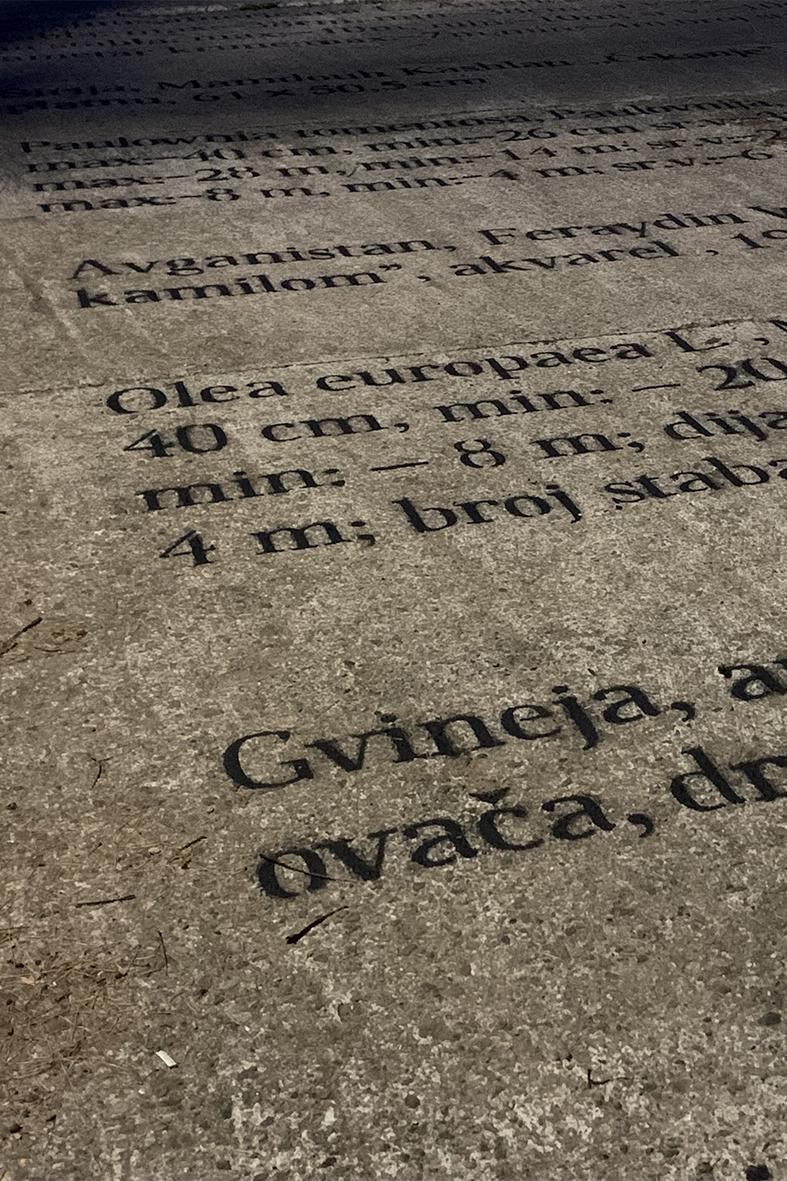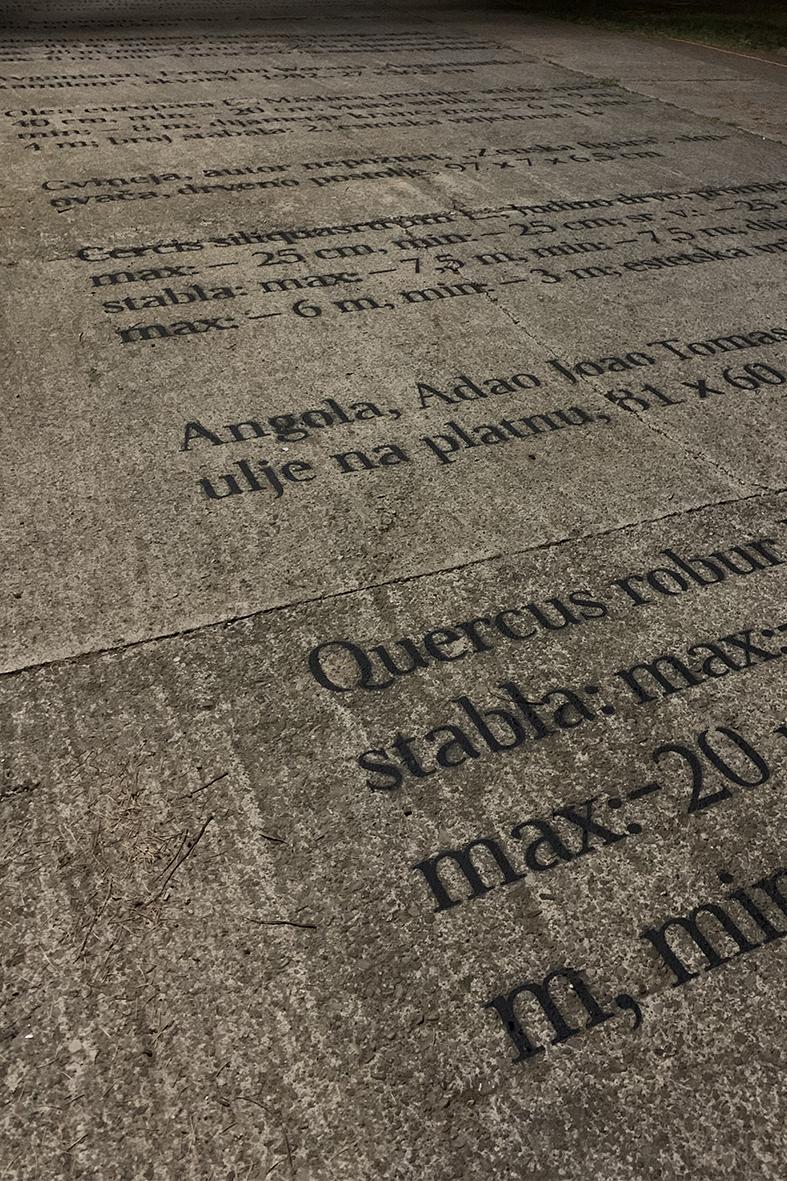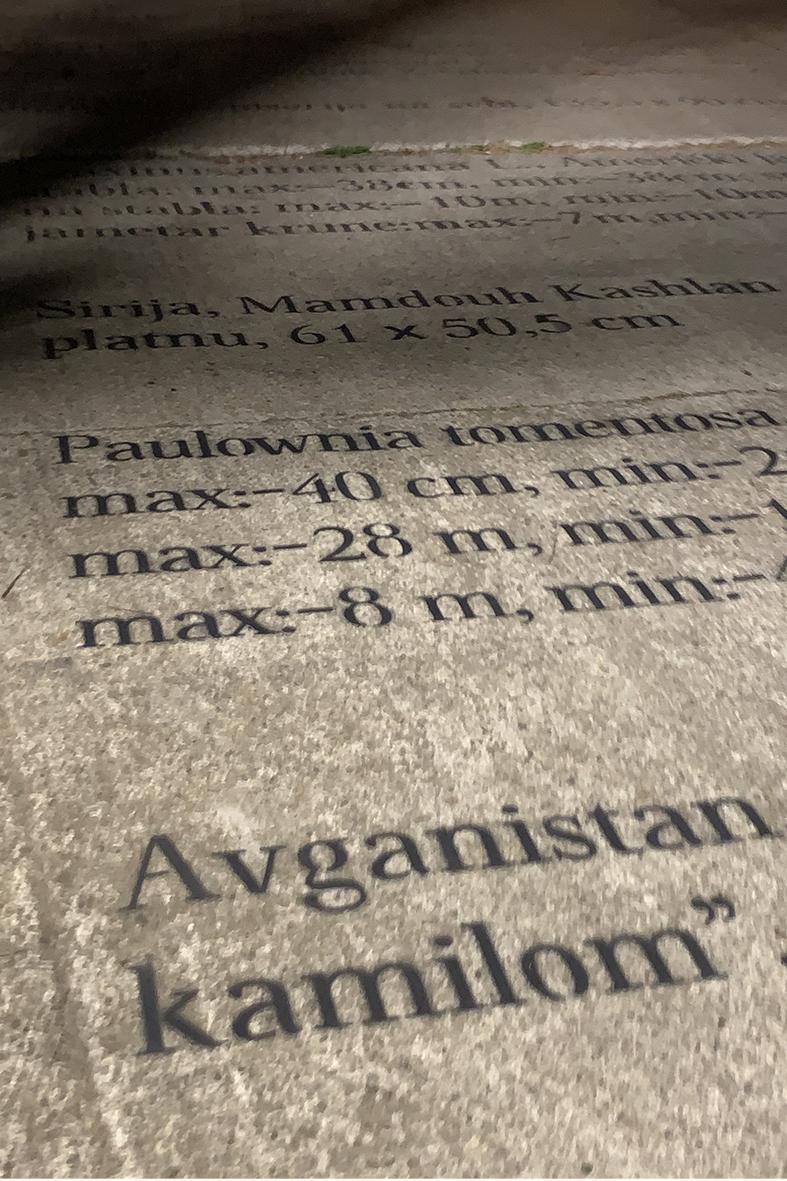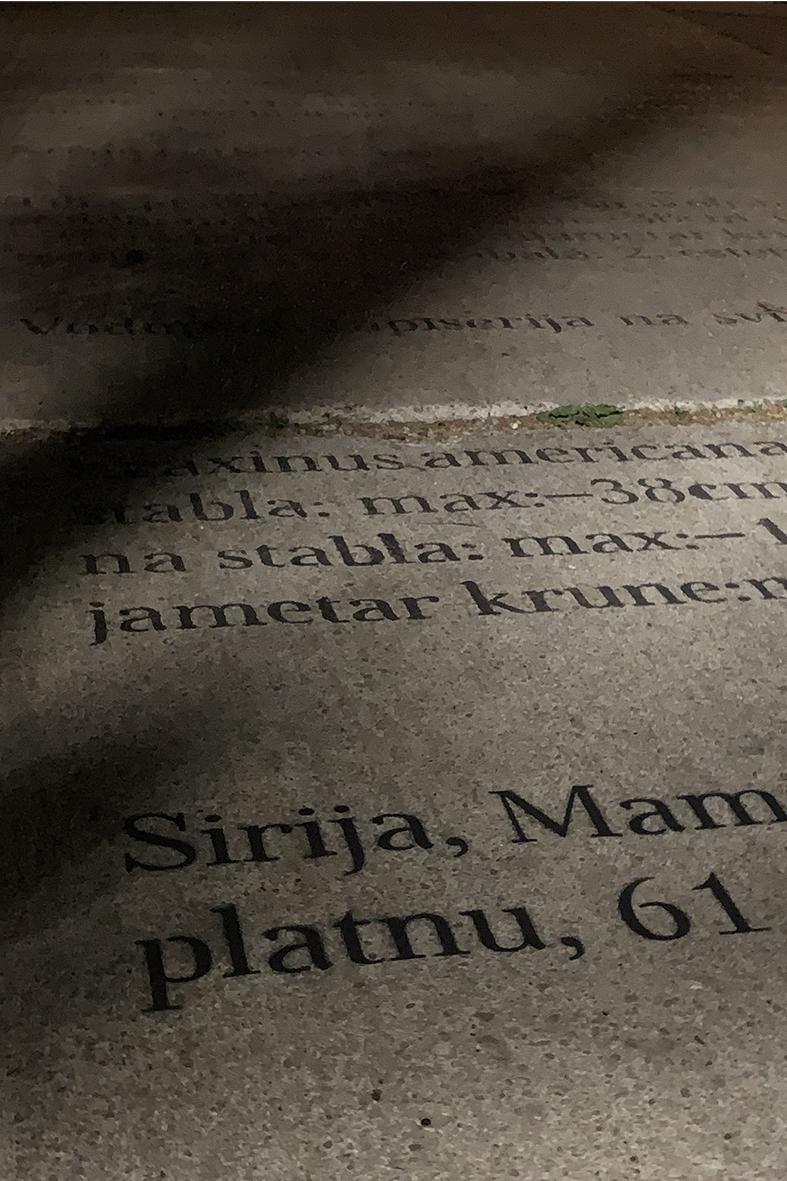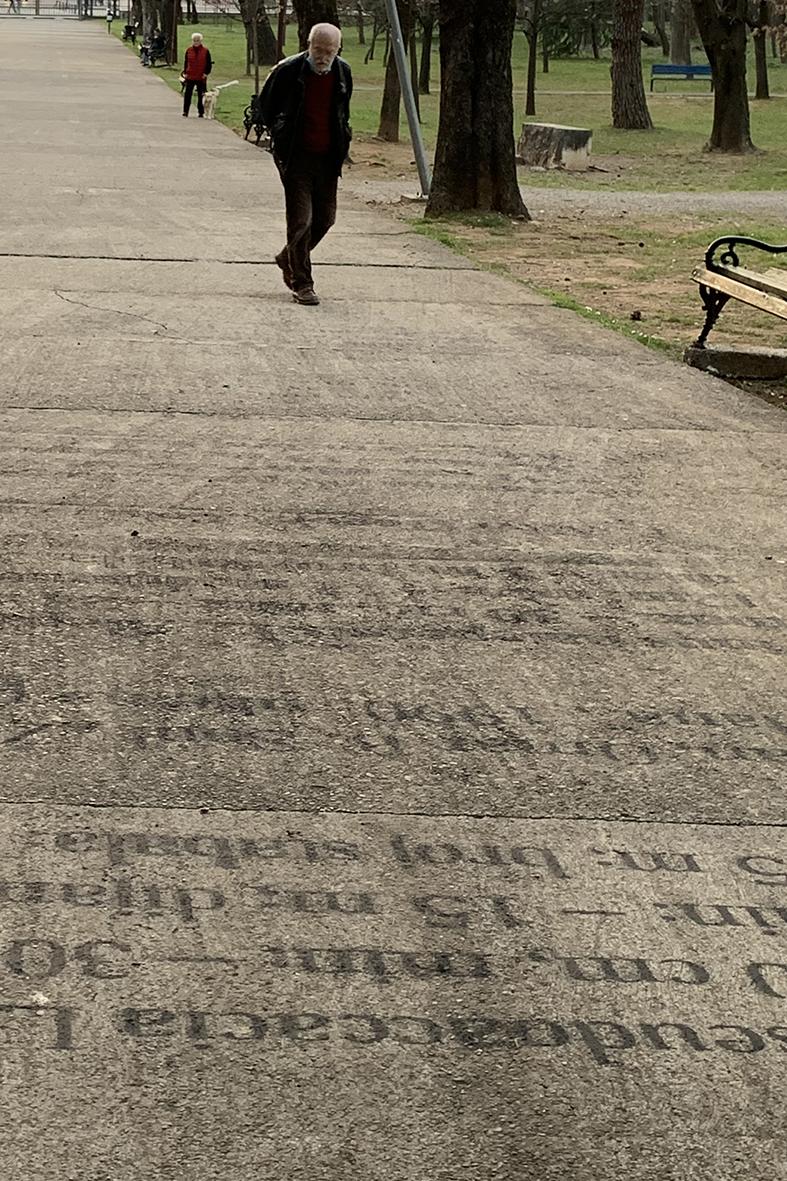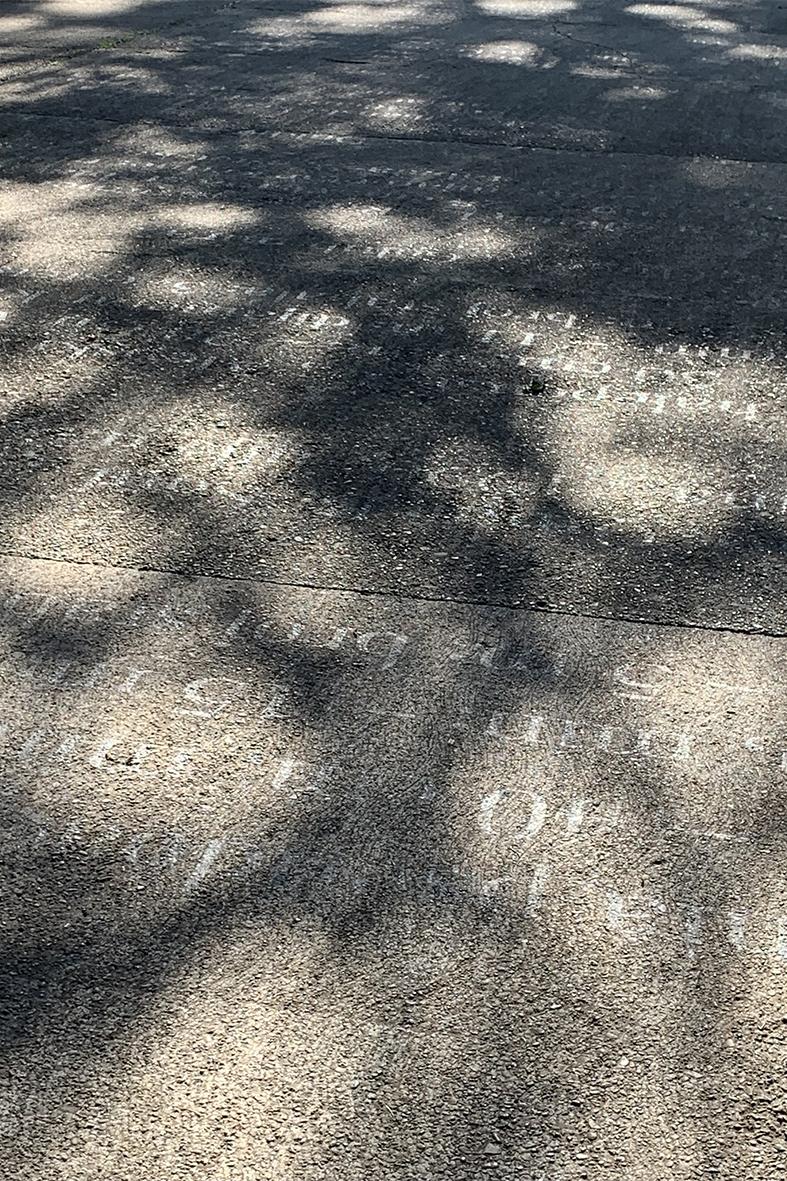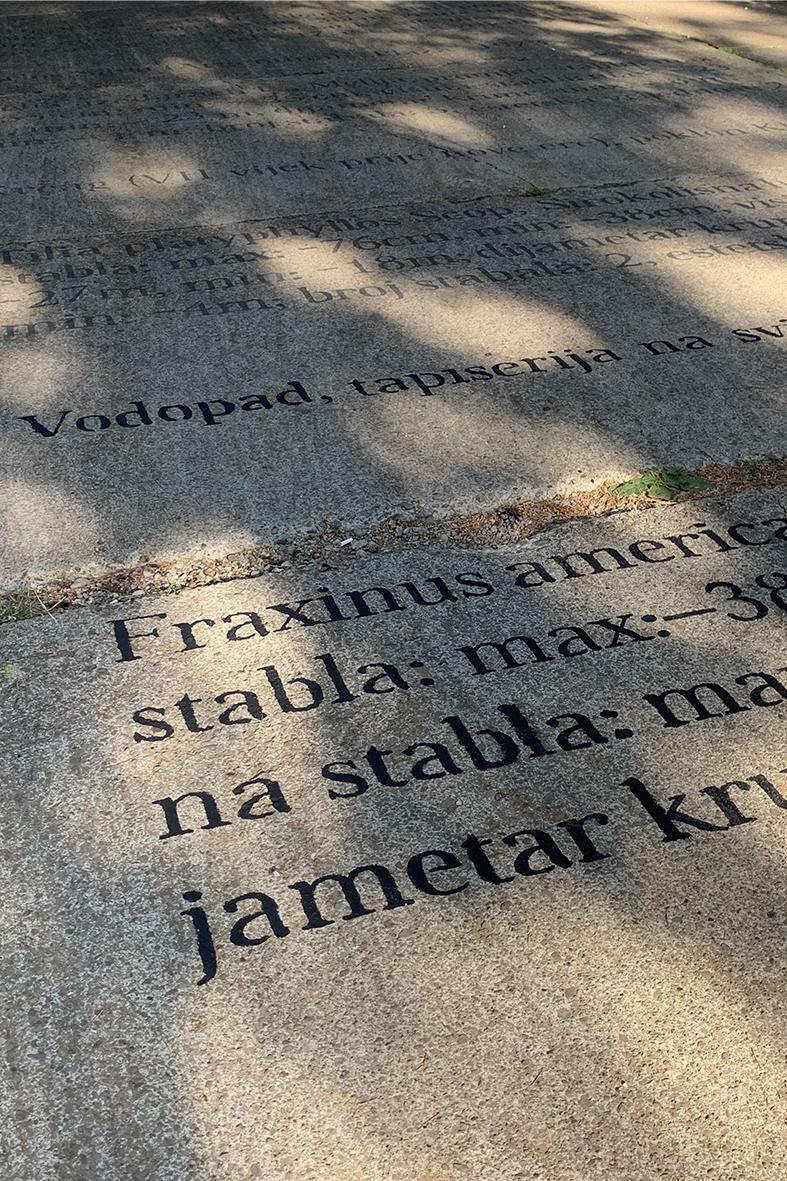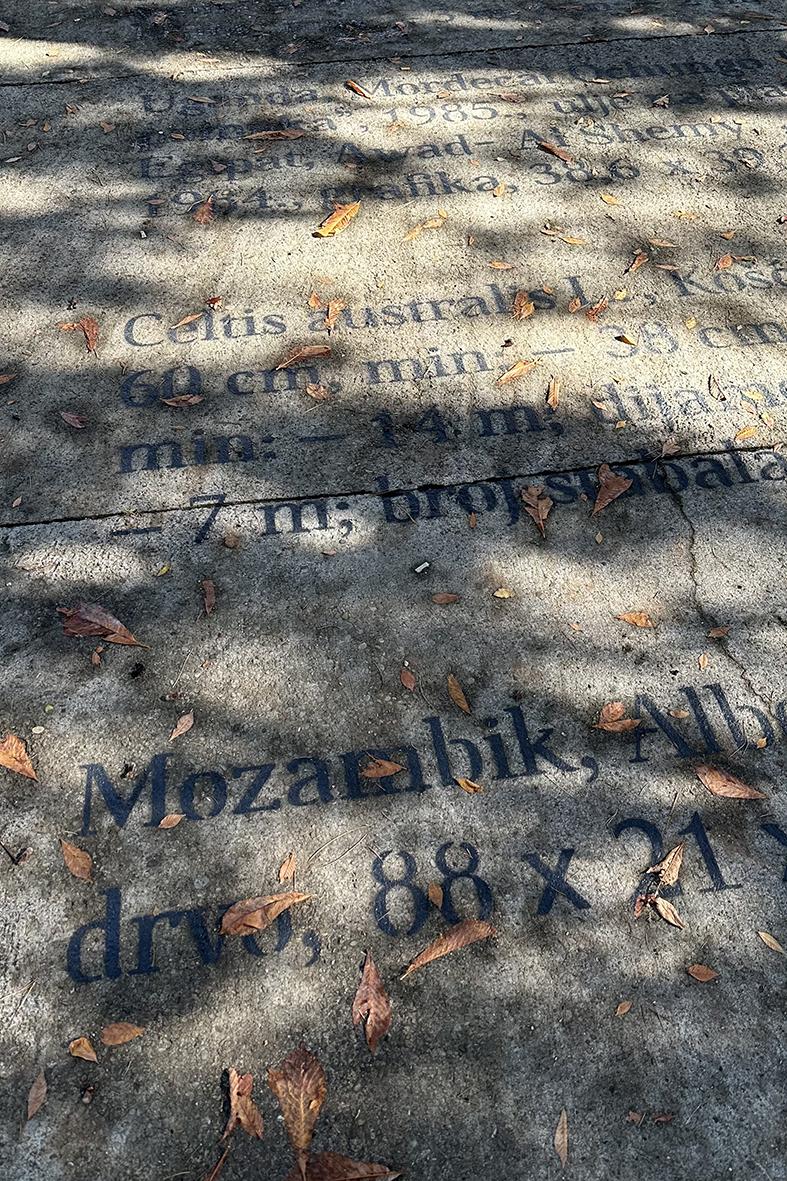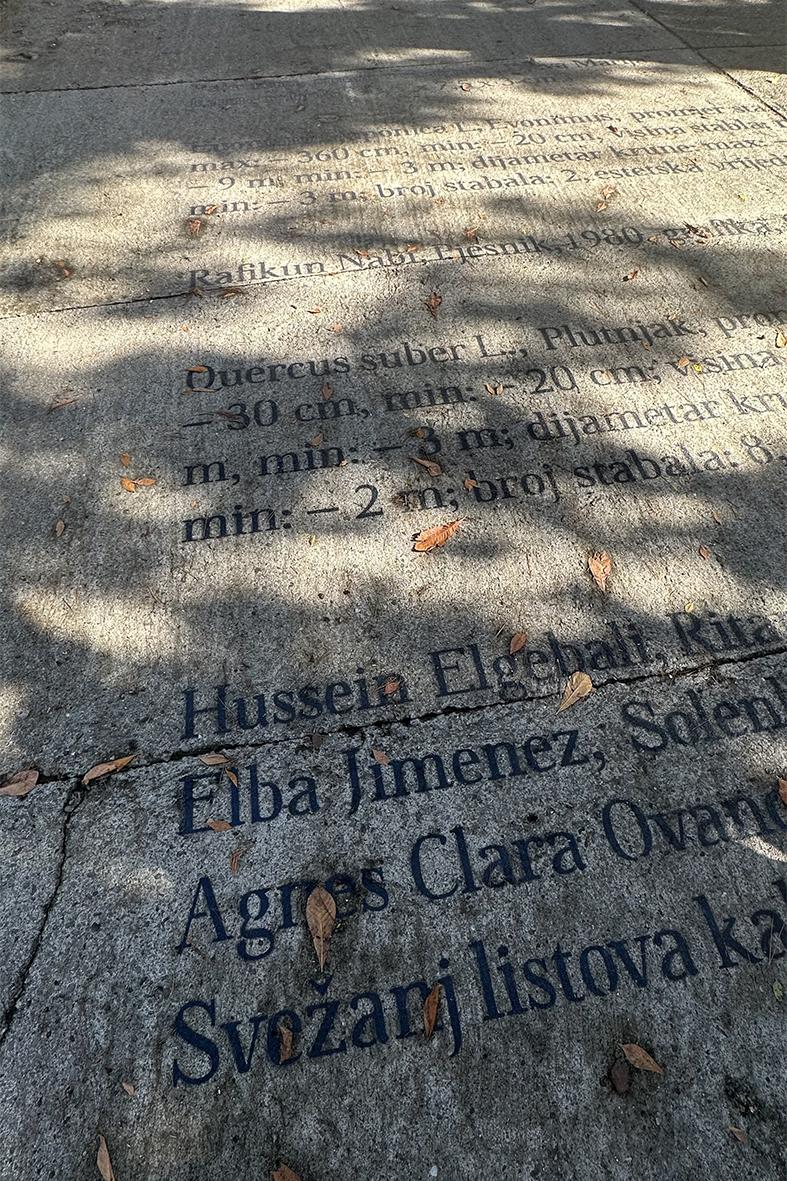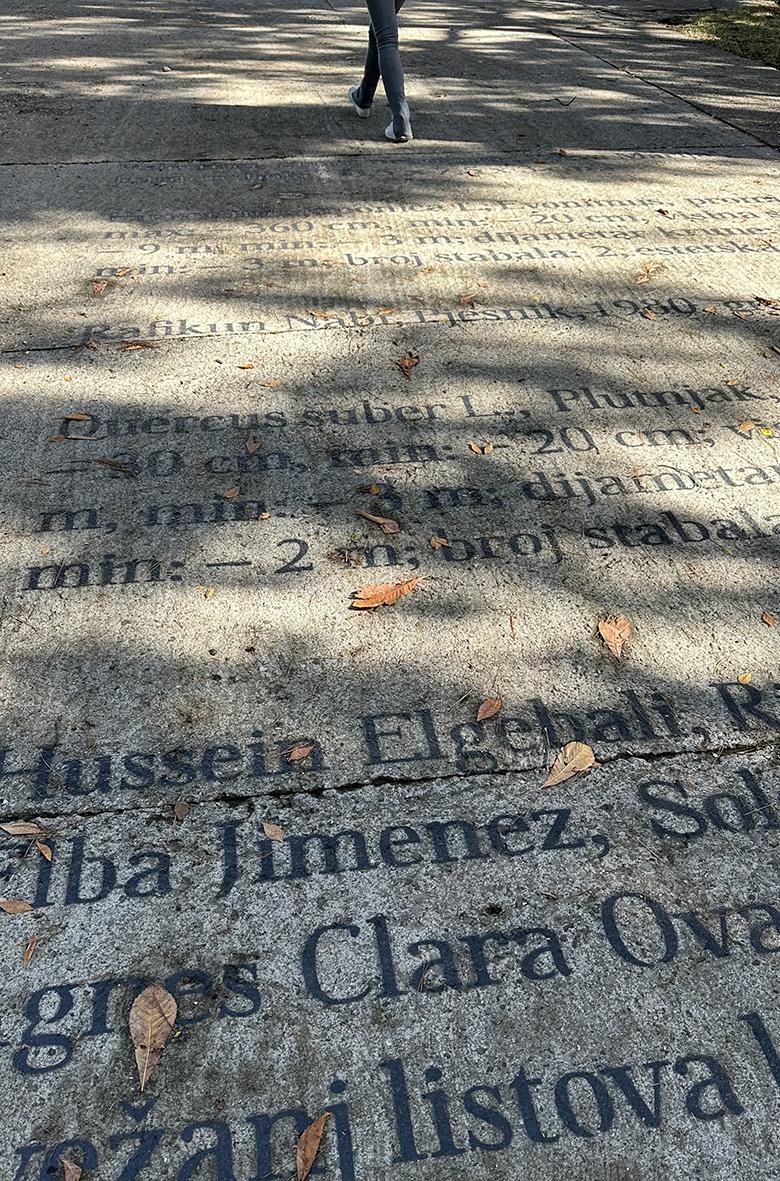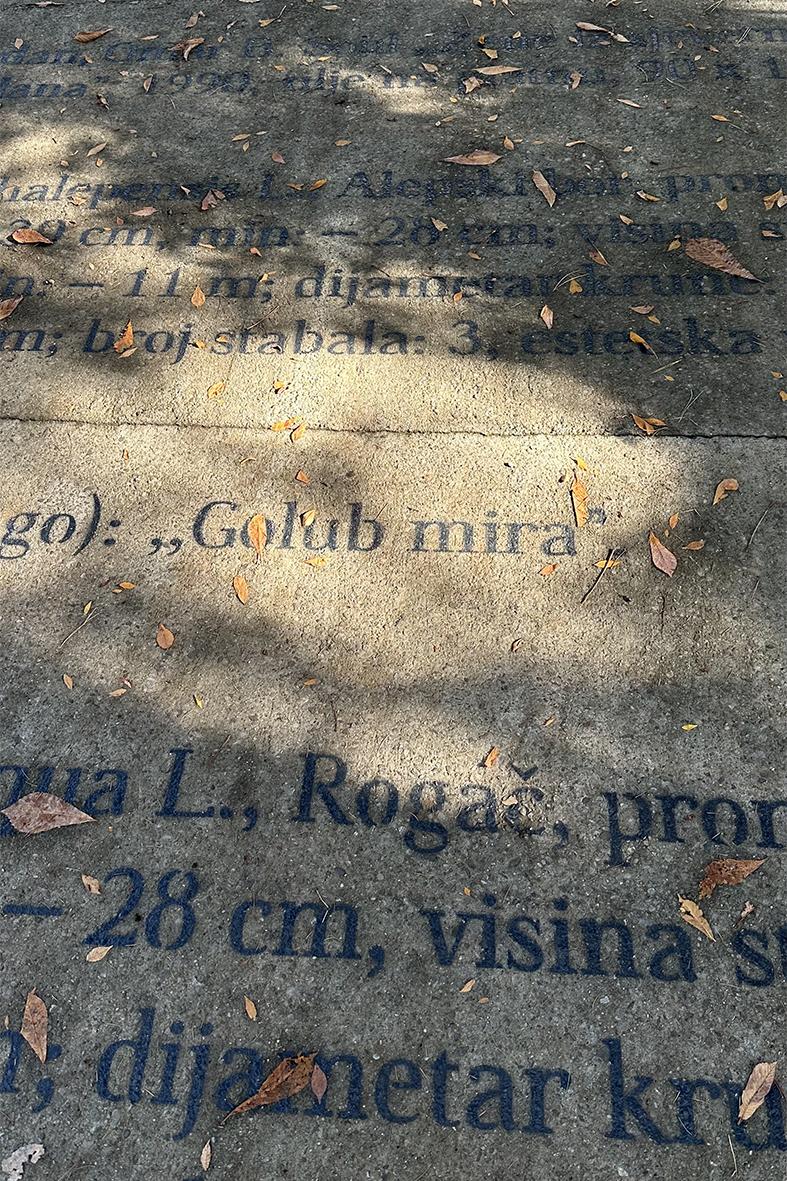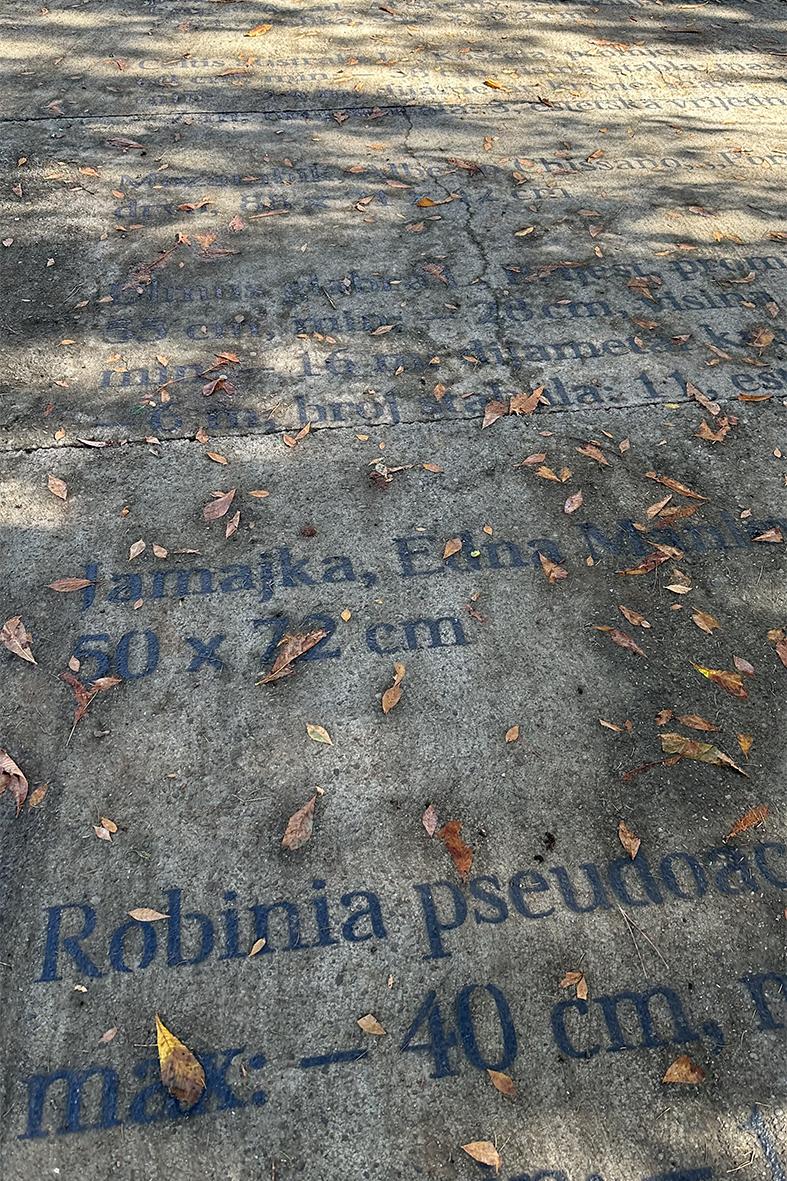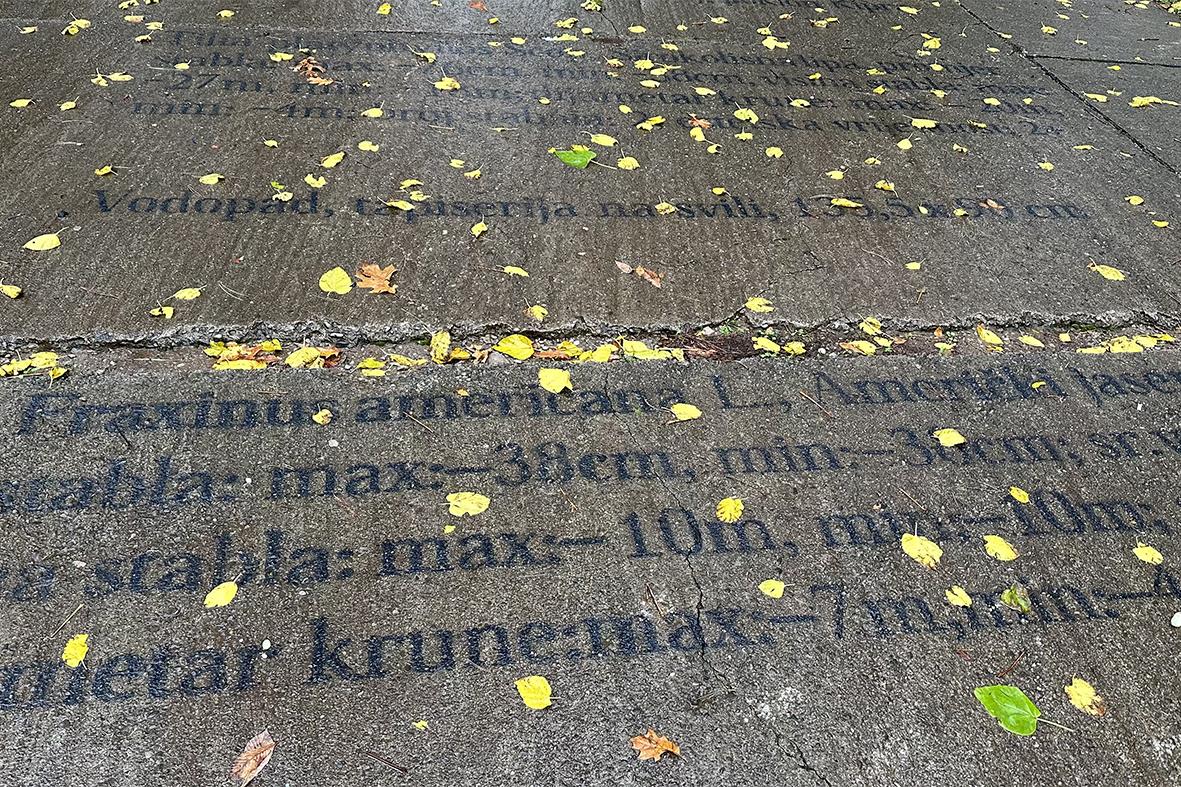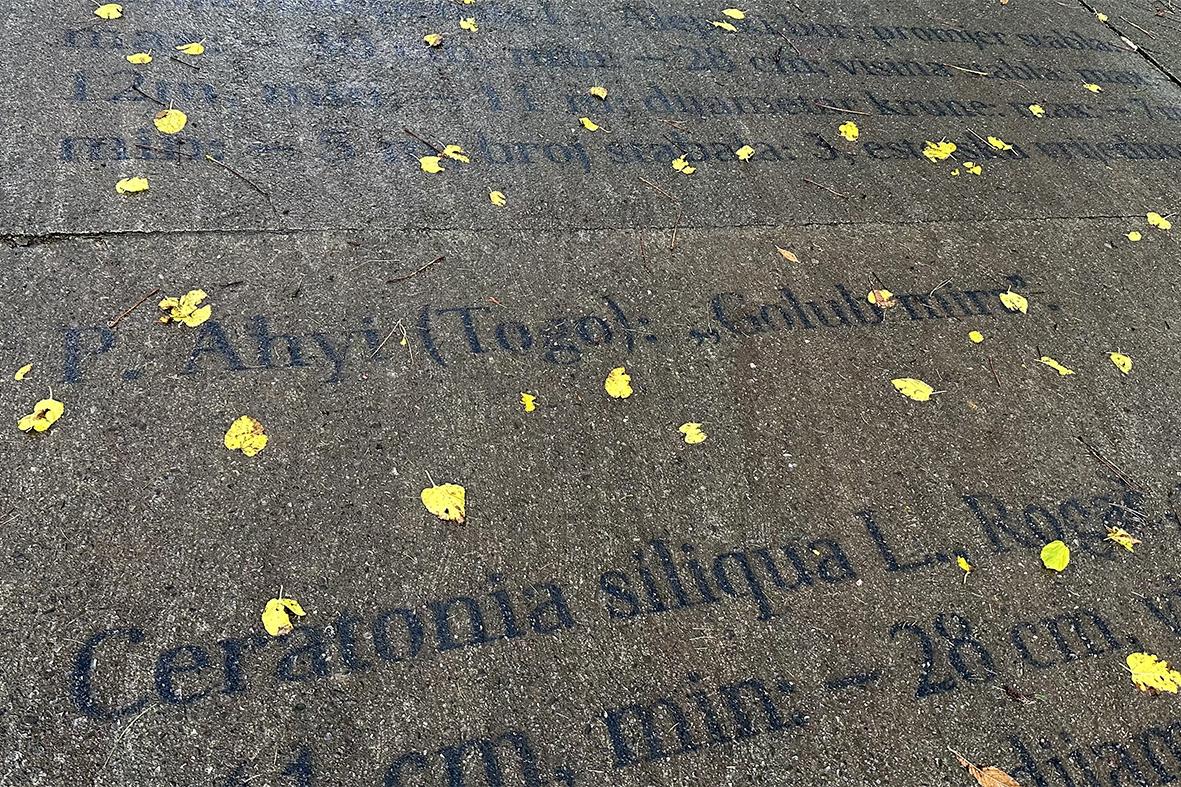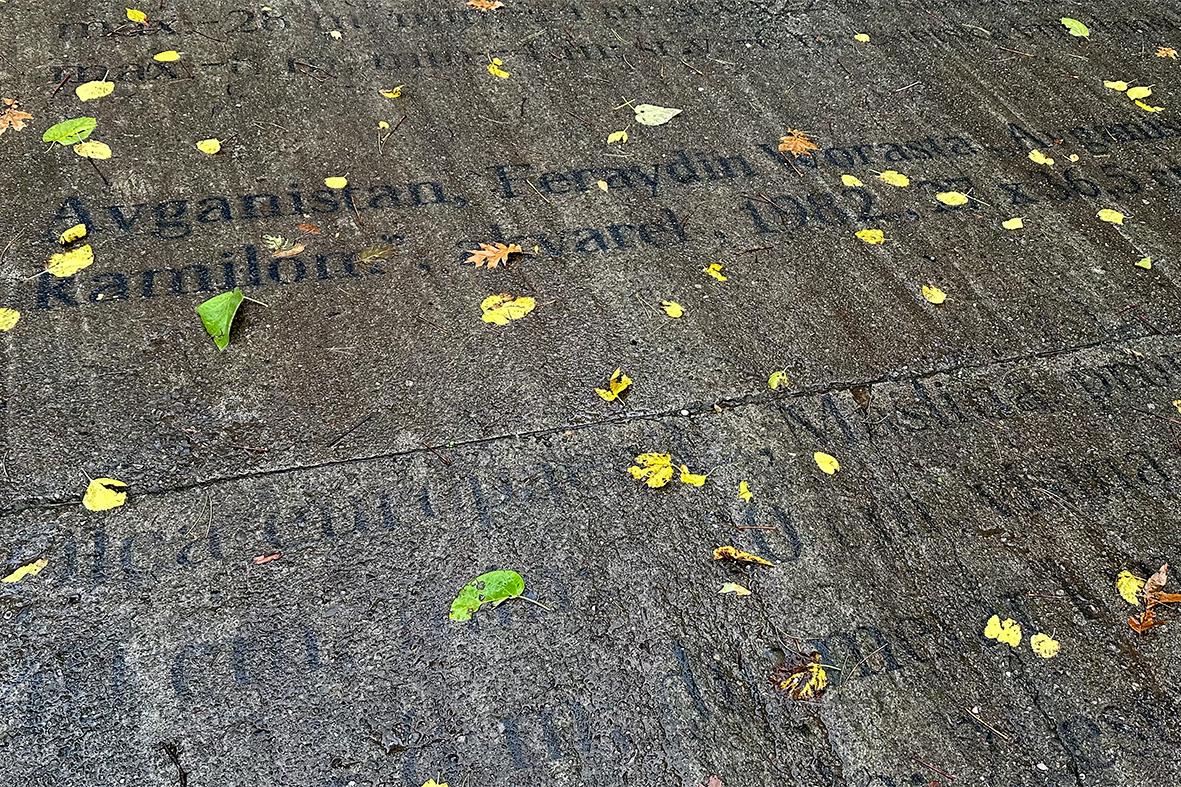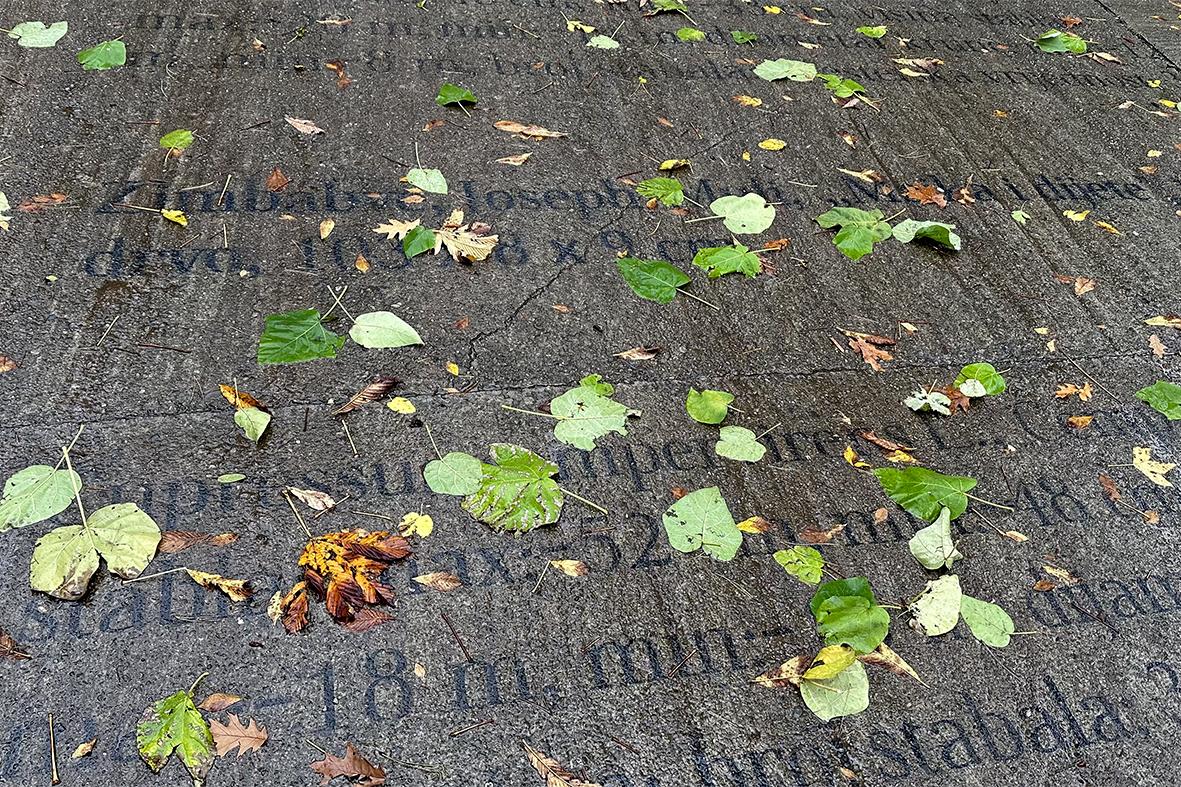Irena Lagator Pejović
works
- Lines, Values, Coexistences
- United Species
- Means that Can Contribute to the Phytoremediation of Polluted Areas
- Saved Books. The Art of Transmitting the Knowledge Without the Need for Subsequent Reparation.
- “I Would Put All Mighty Weaponry Into the Museums That No One Visits”
- Expanses of Love
- “If I Were Ronald Regan”
- Nets, Nodes, Horizons
- Workers University
- My Father’s Salary
- Fiscal Verses. Reprogramming the Machine
- Missing Content
- The Knowledge of the Limited Responsibility Society
- Shared Air
- Blurred Landscapes
- There is Already a Feeling of a Flow
- Symbiotic Collection
- Maximum Profit - Minumum Time
- This is Not a Landscape Any Longer. Tolerance, Transparency, Transition.
- Nature Culture
- Pillars and Horizons
- Where is the Monument?
- Forward Play Reverse
- Life and Institution
- Capital Culture Cuts
- Two Safes. No keys!
- Non LLC l.l.c.
- Plastic Water
- Society and Documents
- Exchange Value
- Work in Public Space
- Institution Nature
- LLC versus Non LLC
- Abbandoned Cinema
- Freedom Security Progress
- Occupying/Liberating Space and Time
- Directions
- Image Images
- Property
- Dissapearance Appearance
- Further than Beyond
- Image Think
- Ecce Mundi
- Camera Imaginata. The Means for Exchanging the Power of the Imagination
- Means for Intensifiying a Sense of Poetic Reconstruction of the World
- The Society of Peaceful Coexistence, Santa Croce sull’Arno
- Installation for Improving the Sense of Responsibility
- Equation Function
- Limited Responsibility Society, Santa Croce sull’Arno
- Resistence Reservoir
- Limited Responsibility Society, Polignano a Mare
- Limited Responsibility Society Automatism
- Experience Economy History
- The Society of Peaceful Coexistence, Belgrade
- Responsitorium Horizon Poems
- Time of Limited Responsibility Society
- Limited Responsibility Society Experiment, Salzburg
- Present Space Expansion
- Cultural Barriers to Growth
- Continuous Limited Responsibility Society
- Knowledge of the Limited Responsibility Society
- Limited Responsibility Society Experiment, Strobl
- Limited Responsibility Society By Night
- Limited Responsibility Society, Cetinje
- Inverse Spaces
- Our Colored Everyday
- Machine Error. Shape a Book
- What We Call Real
- After Memory
- Next
- Is It Still Winter, Outside?
- The Way We Live
- How Small is the Universe
- Living Space
- The Society of Unlimited Responsiblity
- Own Space
- Living Room
- Near Universe
- An Embrace in the Space
- Light in Space
- Please Wait Here
- Wash Inside Out
- What is Missing
- Temporary Dumping Place. Rotations in the Given Space
- Opening of the Book
- Registrar
- May I Help You
- Passerby
- Are You Happy Now
- BBBBeauty
- Tell Why
- Witness of Time - Now
- Witness of Time
- It is Made for You
Symbiotic Collection
2022 –
6000 x 500 cm
textual intervention on the concrete pathway in public space of the Kruševac park in Podgorica from March 2022; first renewal in October, 2023
the taxonomy of the art collection of the non-aligned countries in Podgorica intertwined with names of living organisms, trees and plants from the park surrounding the gallery
process-oriented and interactive artwork
with lectures by: Toni Hildebrandt, Anita Ćulafić, (2022) /
Courtesy of the artist.
Exhibitions/Venues:
- Irena Lagator Pejović, Blurred Landscapes, Petrović Njegoš Foundation and Center for Contemporary Art in cooperation with the Laboratory - art collection of the non-aligned countries, Podgorica, Montenegro, curated by Karolina Majewska-Güde, 2022.
- Gifts and Residencies, Museum of Contemporary Art, Montenegro, Podgorica, curated by Marina Čelebić, 2023.
Photo: Duško Miljanić, Irena Lagator Pejović
In the process-oriented work Symbiotic Collection, the artist highlights a taxonomy of the art collection of the non-aligned countries and expands it by incorporating names of living organisms, trees and plants from the park surrounding the gallery. Through this radical gesture the artist draws our attention to the materiality of the collected objects and reconnects them conceptually and performatively with the natural environment. The Symbiotic Collection aims at collectively placing and marking the names of the plants form the park and objects from the mentioned collection together on the concrete walkway. This work will be carried out in a collaboration with diverse local audiences during workshops organized in the Kruševac park as well as in cooperation with the Laboratory - art collection of the non-aligned countries. Together with the artist, the participants will learn, unlearn, perform and reimagine potential futures of the art collection of the non-aligned countries heritage.
The research exhibition Blurred Landscapes examines the affective heritage and possible futures of the utopia of peaceful coexistence championed by the Non-Aligned Movement and materialized, among others in a collection of the former Art Gallery of the Non-Aligned Countries “Josip Broz Tito”. It activates the idea of symbiotic living through the conceptual and performative engagement with the art collection of the non-aligned countries. The exhibition offers the embodied view of the NAM legacy and its decolonial practices, and its expansion through artistic engagement with objects, ideas, broken developments and the surrounding nature of the mentioned collection. The exhibition consists of two parts, an intervention on the pathway in the park and three artworks in the space of the Foundation.
NAM was initiated by Yugoslavia in 1961 as an alternative political alliance between countries of the Global South that refused to take sides in the Cold War conflict. Solidarity between the non-aligned countries concerned mainly political and economic exchanges. But NAM was also a cultural project that enabled a circulation of objects and an exchange of and between artists and cultural workers in the Global South. The material aspect of this collaboration and exchange provided an opportunity to access different cultures without alienating and hierarchizing them. The collection of the former gallery founded in Podgorica in 1984 preserves the materiality of this political project of the non-aligned, functioning as an embodiment of horizontal, non-hierarchical culture of collecting based often on the practice of donation and gift. It is also a place of aligned connections between different modernisms and modernities. The collection was a part of the daily life of Titograd’s (present day Podgorica) citizens, until the dissolution of Yugoslavia. In 1995 it was integrated into Center for Contemporary Arts of Montenegro. (Karolina Majewska-Güde)
Several sculptures which were made during artistic residencies at the Art Gallery Josip Broz Tito in the 1980s are on the permanent display in the surrounding park. I felt the urgency to look into potentials and poetics of that site. If we regard the sculptures of the mentioned collection and the plants as a content of the park, then we can’t ignore the relations and potentialities that they mutually and in conjunction produce.
Symbiotic Collection questions the possibility of reinventing the art collection of the non-aligned countries. My research also focused on the processes of symbiotic living between the plants in the park in order to unveil different potentials of coexistence and their ability to adapt to living conditions. I engaged in the process of finding, counting, measuring and listing the names of all the varieties of plants that are currently present in the park – the dendroflora – with an intention to draw attention of the audience toward the importance of the bare facts that are present in our immediate vicinity. By intertwining and combining them with the names of artists, titles and dimensions of the artworks from the mentioned collection, I compose a labelling list to visualize, imagine and invent the new models of togetherness and interconnectedness.
Indexing what still exists in both collections, in the institution and in the park, and merging this data into a free and new textual form that is produced over several months in the park, is an effort at indicating the possible vocabularies for a more inclusive future for all. (Irena Lagator Pejović)
